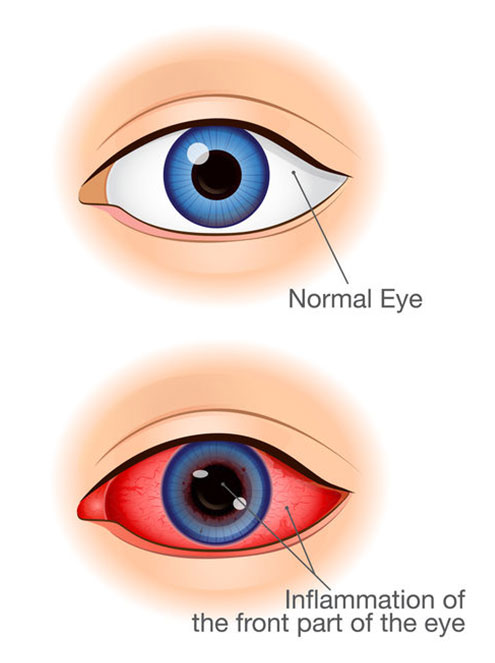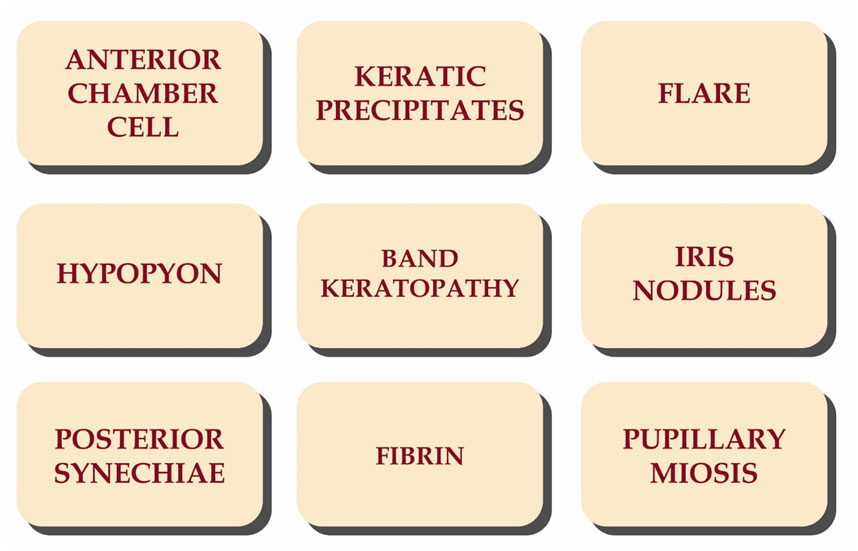NOT EVERY PINK EYE IS CONJUNCTIVITIS, IT CAN BE ANTERIOR UVEITIS ALSO....
“Pink eye” or conjunctivitis is a common eye condition that ranges from mild to severe, acute to chronic and has a wide variety of causes. It can affect all age groups and is often misdiagnosed and mistreated. Fortunately, most conjunctivitis gets better on its own. Treatment can be helpful to reduce symptoms and sometimes prevent more serious consequences.
To confuse things, there are other diseases, such as anterior uveitis, episcleritis and corneal disease that can make the eye look red but are completely different. The best eye specialist in Mumbaimust consider these conditions in any “pink eye”.

What is Uveitis ?
Uveitis is not a single disease entity. Similar to arthritis (joint inflammation), uveitis can be a part of many different disease processes.
There are different types of uveitis, and each of these follow characteristic patterns.
One can identify them by different factors such as
• What part of the eye is affected?
• Whether one or both eyes are involved.
• If the onset of the disease was sudden or gradual.
• If the inflammation completely resolves with treatment which can be stopped (acute), or if it recurs off therapy (chronic) disease.
What is anterior uveitis ?
Uvea has three parts – iris, ciliary body and choroid.
Anterior means that the front portion of the uvea i.e. the iris is primarily affected by the inflammation. The anterior part of the uvea is the iris that surrounds the pupil and the adjacent ciliary body that synthesizes aqueous humor, the fluid that fills the front of the eye.
Inflammatory cells in anterior uveitis may therefore be seen in the anterior chamber (iritis), and sometimes the anterior vitreous (behind the lens, in iridocyclitis).
What are the symptoms of anterior uveitis ?

When is the disease called acute or chronic ?
Acute disease is characterized by a sudden onset and limited duration. The symptoms typically develop rapidly, over a few days. The symptoms will resolve with appropriate anti-inflammatory therapy.
If therapy can be tapered and inflammation does not recur for at least three months off of treatment, the disease is said to be of limited duration.
The episode may be a single episode, or may be recurrent, with symptoms and signs recurring after at least three months of absence of inflammation off of all therapy.
Chronic disease is when the inflammation (with or without symptoms) recurs when medication is tapered and stopped. In case of recurrent, it is recommended that you seek treatment at the best eye hospital in Mumbai.
What are the etiological factors for Anterior uveitis ?
It may occur as an isolated medical problem without any association with illness or inflammation elsewhere in the body or may arise as part of a localized infection or inflammation affecting other organs in the body.
It can occur as an adverse reaction to a medication. AAU may also be associated with an illness affecting multiple parts of the body. The most common illnesses associated with AAU are also associated with a genotype known as HLA-B27. The most common association with AAU is ankylosing spondylitis, an inflammatory arthritis associated with HLA B27.
Some of the less common diseases associated with AAU include sarcoidosis, interstitial nephritis (a rare kidney inflammation), relapsing polychondritis (a rare autoimmune disease), and vasculitis (an inflammation of the blood vessel wall).
What are the signs of anterior uveitis?

What is the treatment of uveitis ?
The mainstay of therapy foruveitis is topical drops. These usually include a topical corticosteroid drop such as prednisolone acetate 1% and often a dilating drop such as cyclopentolate. The corticosteroid drop treats the underlying inflammation. The dilating drop reduces pain and helps to prevent the complication of the pupil sticking to the adjacent lens.
Some forms of AAU are associated with an infection such as herpes and will also require therapy directed at the known infectious cause. You must consider visiting the best eye hospital in Mumbai to seek treatment for the same.
On occasion AAU is severe enough to warrant treatment by the local injection (shot) of corticosteroid near the eye itself or by oral therapy such as prednisone.
For recurrent or chronic disease and flares that are vision threatening despite local therapy, systemic immunosuppression therapy may be indicated that sometimes requires the expertise of the best eye specialist in Mumbai, preferably a rheumatologist or uveitis specialist.